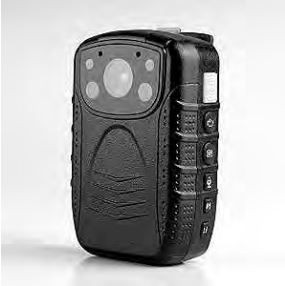District police will participate in a body camera pilot program beginning Oct. 1. The dialogue on body cameras has been ongoing for months; however the killing of Michael Brown in Ferguson, Mo. has given the initiative momentum. For the Metropolitan Police Department (MPD), police use of body cameras is one of the department’s “top five priorities.”
Mayor Vincent Gray and MPD Chief Cathy Lanier held a news conference Sept. 24 announcing the police body cameras project. The six-month, $1 million project will place cameras on 165 police officers.

“Our Metropolitan Police Department has been a leader in using technology to aid policing and public safety, and I want to commend Chief Lanier and the department for implementing this program, which has been in the works for more than a year,” Gray said at the conference, “especially since the unfortunate incidents in Ferguson, Mo. have brought the issue of body cameras to national attention. I’m proud that MPD will continue to show leadership in this area.”
Chief Lanier said, “We are looking at the best practices for implementing these devices.
“We are in an age where this type of technology is becoming more common, and we want to capitalize on that. The presence of cameras will benefit the community and MPD members by improving police services, increasing accountability, and enhancing public safety.”
Akosua Ali, president of the D.C. chapter of the NAACP told dcist.com, “The NAACP supports MPD officers wearing cameras to ensure transparency and accountability of misconduct by both police officers and citizens. These cameras will offer evidence supporting justice for victims of police misconduct, and police officers also deserve proof against unjust claims of misconduct.”
The Coalition to Stop Gun Violence, a nonprofit organization that seeks to secure freedom from gun violence through research, strategic engagement, and effective policy advocacy, also supports the use of body cameras. “Transparency is a critical element in any democratic system of government. We credit law enforcement agencies that are now considering utilizing modern technology to ensure that their officers are accountable to the public and ensuring their safety,” Communications Director Ladd Everitt said. “That can only strengthen the relationships that law enforcement officers build with residents in their community.”
On May 8 the Police Complaints Board issued a report to the mayor and police chief. It included information from a study of officers in Railto, Calif. In the study, 70 police officers in Railto, Calif. used body cameras as an experimental procedure from February 2012 to February 2013, the report said.
The report indicated that Railto officers allegedly committed five categories of misconduct between 2011 to 2013. The highest category of misconduct was demeanor or tone, defined as “insulting, demeaning, and humiliating in citizen complaints.”
The report also gave five potential benefits for using body cameras – “reducing misconduct complaints through improved police-citizen encounters; facilitating citizen complaint resolution; officer training; reducing civil liability; and improving the criminal justice system.”
WAMU, American University Radio reported that “according to D.C. police statistics, there were 358 complaints filed against officers in 2013. Of those, 53 were allegations that officers were rude or abusive, 50 for abuse of authority, and 48 for failure to take action – all accusations that would have been caught on tape with the body cameras.”
Lulu Sunflower, a resident of Ward 8, is not sure about the body camera initiative. “There have been eyewitness reports and surveillance, police pulling you over, firsthand accounts of evidence they had that didn’t help,” she said. “I don’t think it will make any difference.”

